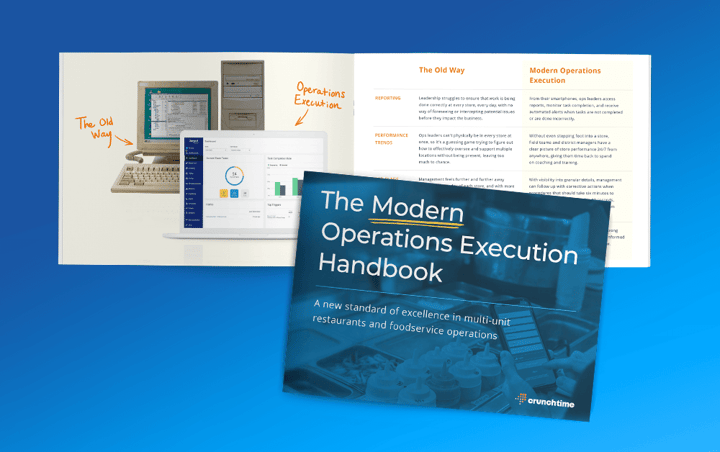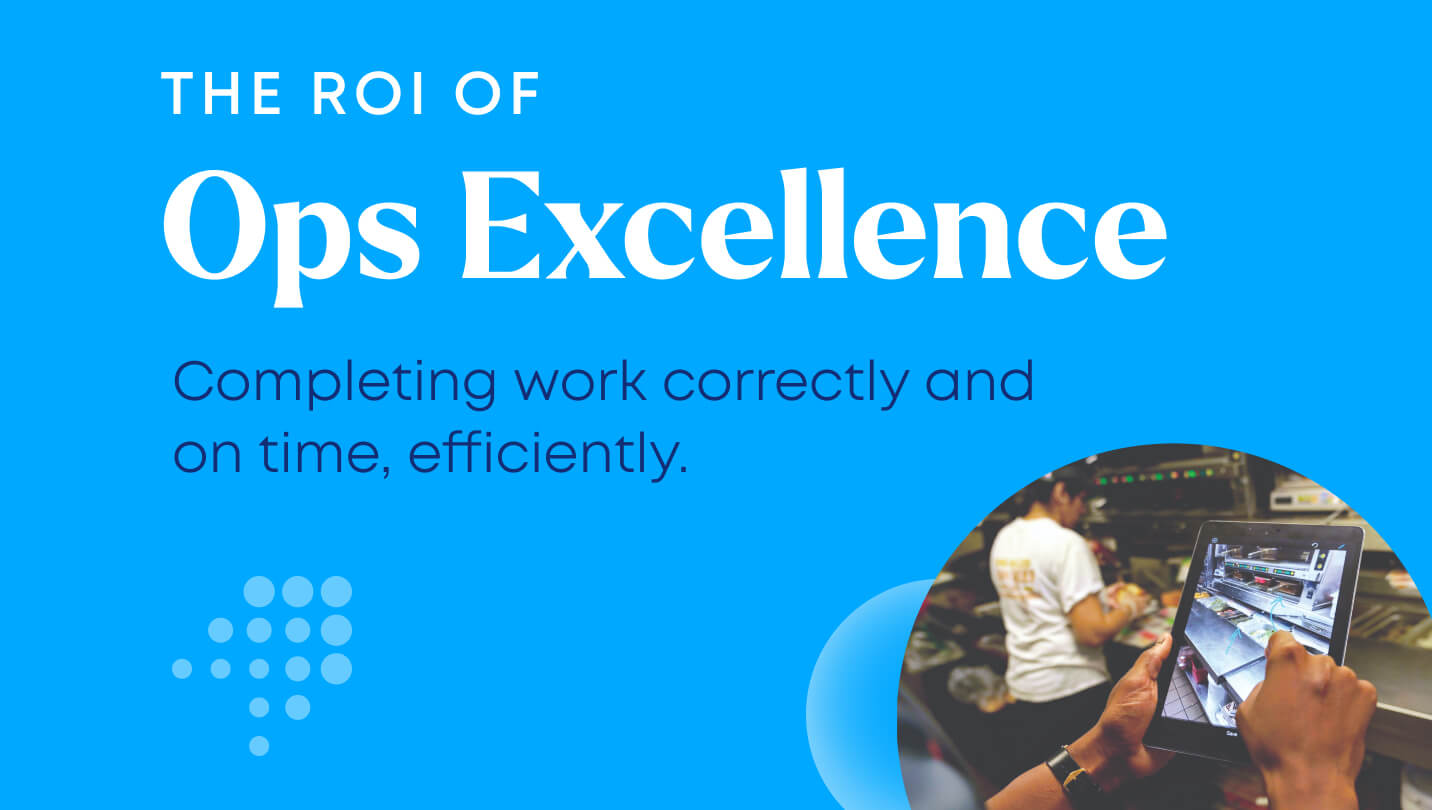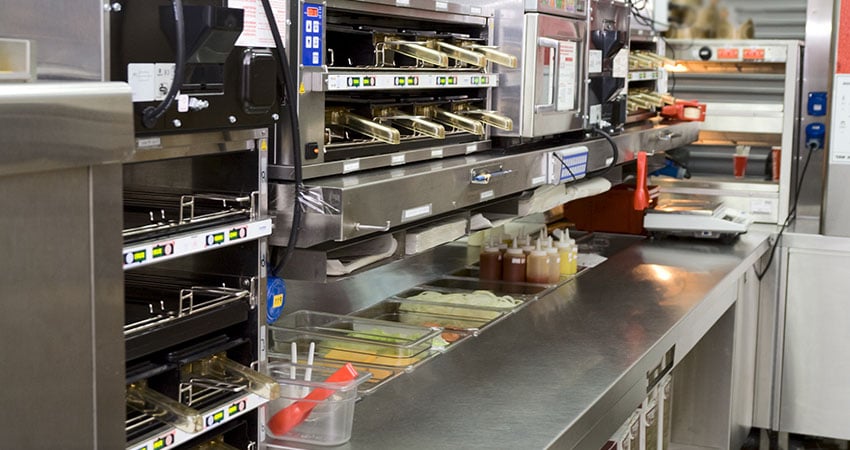
- Home
- Crunchtime Blog
- The ROI of Ops Excellence: How Restaurants Can Measure the Value of Improved Team Execution in Every Location

The ROI of Ops Excellence: How Restaurants Can Measure the Value of Improved Team Execution in Every Location
This is the third part in a five-part series about understanding the ROI of ops excellence in restaurants. First, we outlined the overall value of ops excellence in restaurants, and then explored how better inventory and food cost management impact profitability.
Now, we'll focus on the ROI of operations execution–completing work correctly and on time to see how improving operations execution can positively impact customer experiences and your bottom line.
Every task completed by every employee across your locations is an opportunity that can drive a great customer experience—and make a big impression on them about your brand. As a result, there is strategic value in improving operations execution.
Right now, as planning meetings kick-off and 2024 investment decisions are made, you’ve got to ensure that the main drivers of ops excellence get priority in the coming year. Prioritizing initiatives that give your team visibility into the work happening in every restaurant location while giving your store teams time back to spend on more meaningful activities are worthwhile investments that should pay for themselves.
But, how exactly do you make the internal business case to invest in better operations execution in your stores, and in the field?
To make the case and get the right initiatives approved, start tracking these key outcomes to see how improved operations execution can impact customer experiences and your business:
Productivity - Efficiency across teams in stores, the field, and HQ
An increase in productivity means that not only will more tasks be executed each day, but employees will have significant time freed up to focus on higher-value activities. When communicating the success of your operations execution platform, use these metrics to prove the ROI of operations execution in productivity:
- Show changes in responsibilities by role
- Show improvements to tasks or new, high-value tasks that were introduced
- Calculate the hours spent by task. For example, some Zenput users have reported that using the platform resulted in 5+ hours saved per week by store employees
- Demonstrate any increase in revenue that correlates with the beginning of an initiative to improve productivity
To determine the potential productivity return from an operations execution platform, you can think of efficiency improvements in two different ways: By role, and by key tasks and processes.
Measuring and improving productivity by role
To scope out productivity improvements by role, identify role-specific opportunities for employees to use their time more efficiently. These opportunities should be a wishlist of things each role currently is not accomplishing with the time they have, but that would help deliver against your brand standards if they were able to do it consistently.
Borrow general efficiency ideas for each role from the example chart below, and then expand on it with more specific ideas that support your brand standards. For example, you may want store managers to automate creating follow-up tasks because it’s important to your brand that they have time to learn each customer’s name and ask how their day is going.
Example Productivity Gains by Role
|
Role |
Time Savings |
|
Store Employees |
Saving time, automating tasks. By improving efficiency in day-to-day store operations, your managers may be able to eliminate shifts and/or maximize the productivity of workers who are on duty by monitoring their performance more clearly and offering swift corrections when work is not being done correctly. |
|
Store Managers |
Organizing, prioritizing, and tracking daily work. Store managers will be able to re-focus their time, moving away from putting out fires, getting caught up with paperwork and other menial tasks, to spend time on best-in-class training and staff management procedures. |
|
District Managers |
Visibility into store conditions, expanded coverage capacity. District managers will have a clear picture of the work happening at every location before even stepping foot into a store. This substantially reduces time spent on conducting audits and following up on corrective actions, and allows more time coaching and training. The implication of creating more efficiencies for district managers is they'll be able to expand their store coverage area. |
Measuring and improving productivity by task
Productivity improvements can also be thought of in terms of key tasks and processes. How could a shift away from manual processes yield time savings that can be applied to higher-value activities? For example, map out process efficiency gains in your audit management or incident response processes.
For each task or process you want to improve, detail which parts of its execution could be improved or eliminated by investing in initiatives to drive better operations execution. Be sure to also include any net new tasks or processes that would demonstrate an improvement in productivity if they were implemented. For example, you may describe how employees can shorten the time they spend describing a broken piece of equipment in an incident report by having the ability to attach photos directly with their phone. For ultimate impact, track and quantify the actual number of employee hours saved per day per store as these tasks become more efficient.
Quality of Execution - Completing standard operating procedures (SOPs) consistently
Brands can also determine a positive return on improving operations execution by measuring the quality with which each task is completed. When communicating the success of your operations execution platform, use these metrics to prove ROI in quality:
- Improvements to audit scores, usually by a percentage change
- Improvements to health inspection results
- Increases in customer satisfaction ratings
- Decreases in instances of pencil-whipping or inaccurate data entry
- Any increase in revenue that correlates with the beginning of an initiative to improve the quality of execution
Use these opportunities to look for quality improvements:
Audit scores and health inspection scores
Internal and third-party audits are important tools to help operations leaders understand how a store is performing on brand standards and quality. If each task completed on an audit gets you closer to providing the best possible guest experience, what could a 5% or 10% improvement in your audit scores mean for your business’s overall success?
Health inspections show that your employees have completed tasks that are critical to health and safety, which will likely prevent a costly food safety misstep for both revenue and brand reputation. What could your businesses' cost savings be each year if you were to prevent even one or two of these incidents? Tracking these scores is another way to see the return on your investment in an operations execution tool that helps managers ensure compliance with health and safety codes prior to inspection.
Online reputation and customer satisfaction scores
Just one negative review can damage a store’s reputation, and a trend of poor reviews can have serious ramifications for sales. Preventing complaints about quality or customer service and improving operations execution to deliver higher, more consistent quality at your stores will bring your rating up. As your online reputation improves, likely so will your sales.
In addition to this potential increase in revenue, consider using survey tools to measure customer experiences. Track any changes in survey results or in star ratings on major review sites to judge the return on your operations execution improvements.
Integrity of information
How much would it be worth to your business leaders to have confidence that the information you’re tracking has all been entered accurately and with integrity? Whether it's automating temp readings to prevent pencil-whipping or tracking the location of data entries, you can yield cost savings by preventing incidents caused by inaccurate information, and time spent by operations leaders untangling questionable data.
Increasing Revenue
You’ll find that making people more productive at every level of your brand and enabling them to do their jobs well directly impacts your ability to create great customer experiences and grow revenue.
Visibility - Gain insights to make operational improvements faster
Without an operations execution initiative, it can also be unclear where a brand should be investing in order to improve. A leader with increased visibility may be able to identify time-saving opportunities, trends in diminished quality of task execution, or other ways to help their employees deliver great experiences efficiently.
Field teams and other operations leaders are responsible for finding strategic areas for improvement and, whenever possible, proactively identifying possible problems before they come to fruition. The limited visibility that restaurants do have is often driven by audits that recur on a monthly basis— forcing them to be behind the ball after little problems become big problems.
When thinking about gaining visibility into execution and performance, ask yourself these questions:
- What if you were able to immediately identify trends and address widespread problems earlier? For instance, if analysis of your audits shows that cashiers aren’t greeting or offering upsells correctly to customers, what impact could you have by taking action right away?
- How often do you have visibility into real-time HACCP temperature logs in each store? What if you could enable staff to receive alerts and take action immediately when issues arise?
- Which team members are going above and beyond? How can you tell? Are you rewarding or incentivizing them? If not, what impact could recognizing staff in this way have on your operation?
- Are you seeing repeat equipment issues? What if you had proactive maintenance support?

Measuring the return on investment of operations execution
These outcomes and suggested success metrics can work for you at any part of your operations execution evolution. If you’re in the beginning stages of kicking off an initiative, use these expected outcomes to help build your business case and communicate with leadership about the value of operations execution.
If an operations execution project is already underway at your restaurants, use these metrics and other success criteria to quantify your progress and ultimately prove the return on investment of operations execution. Get in touch with us for a customized demo when you’re ready to see how Crunchtime can help you improve quality and consistency in your stores.
Stay tuned for the next part of this series, where we’ll focus on the ROI of better scheduling and labor management and the impact on profitability and employee engagement.
Share this post
Related

.jpg?length=720&name=marcel-heil-l4RY7bqtCOM-unsplash%20(2).jpg)
How OpsX Enhances Customer and Employee Experiences in Every Store


